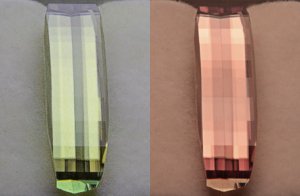mercoledi
Ideal_Rock
- Joined
- Jun 20, 2006
- Messages
- 2,822


Date: 2/23/2009 3:30:18 PM
Author:mercoledi
Hiya! I saw in an earlier locked thread that this is your favorite cut. I''ve only seen a few in person but I love orderly, geometric looks. How does one judge an opposed bar cut? Have you bought any online? Do you have any favorite vendors or favorite base materials for this cut?
Thanks!
